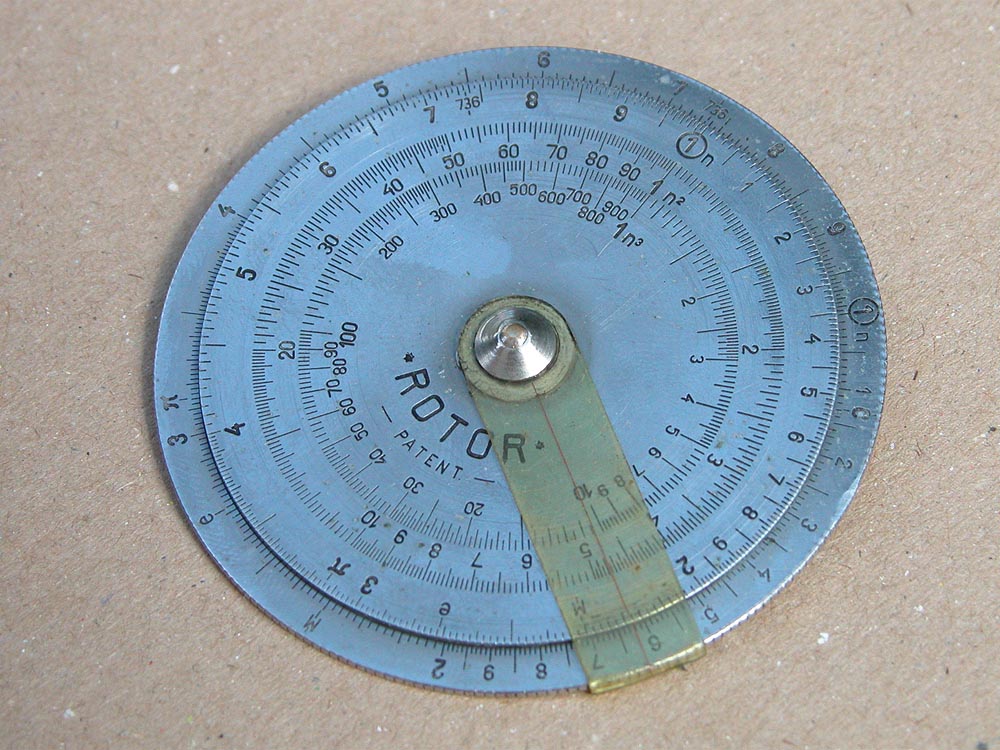ROTOR logartárcsa
In the yeas of recession, the Telefongyár (Factory for telephones) in Budapest had to design and produce goods that were not belonging to their profile. The patent for a logar-tárcsa (circular slide rule) was dated from 8 February 1933 with ID 109576. This invention was unusual on its material, its size and its features. It was made of new silver or german silver (alloy of copper, zinc and nickel) and the diameter is 6.36 cm so makes it possible to measure in cms with rolling the slide rule. The planned version described in the patent has the stator (the outer disc) an engraved socket for the inner disc called rotor, but the version produced has two plain discs. Both versions were made for PR-purposes with company names engraved on the front. The production of Rotor was discontinued in 1938 due to increasing requirements of the army.
| Manufacturer: | Telefongyár Rt. (Hungary) |
| Mfg. date: | 1933-38 |
| Size: | d=6,36 cm |
| Purpose: | standard circular slide rule |
| Material: | body: light metal scales: engraved |
| Scale length: | r = 18 mm-28 mm (l = 11,3-17,6 cm) |
| Scale order: | special front: D | C B K | back: L S* T* |
| Window: | celluloid with 1 index |

